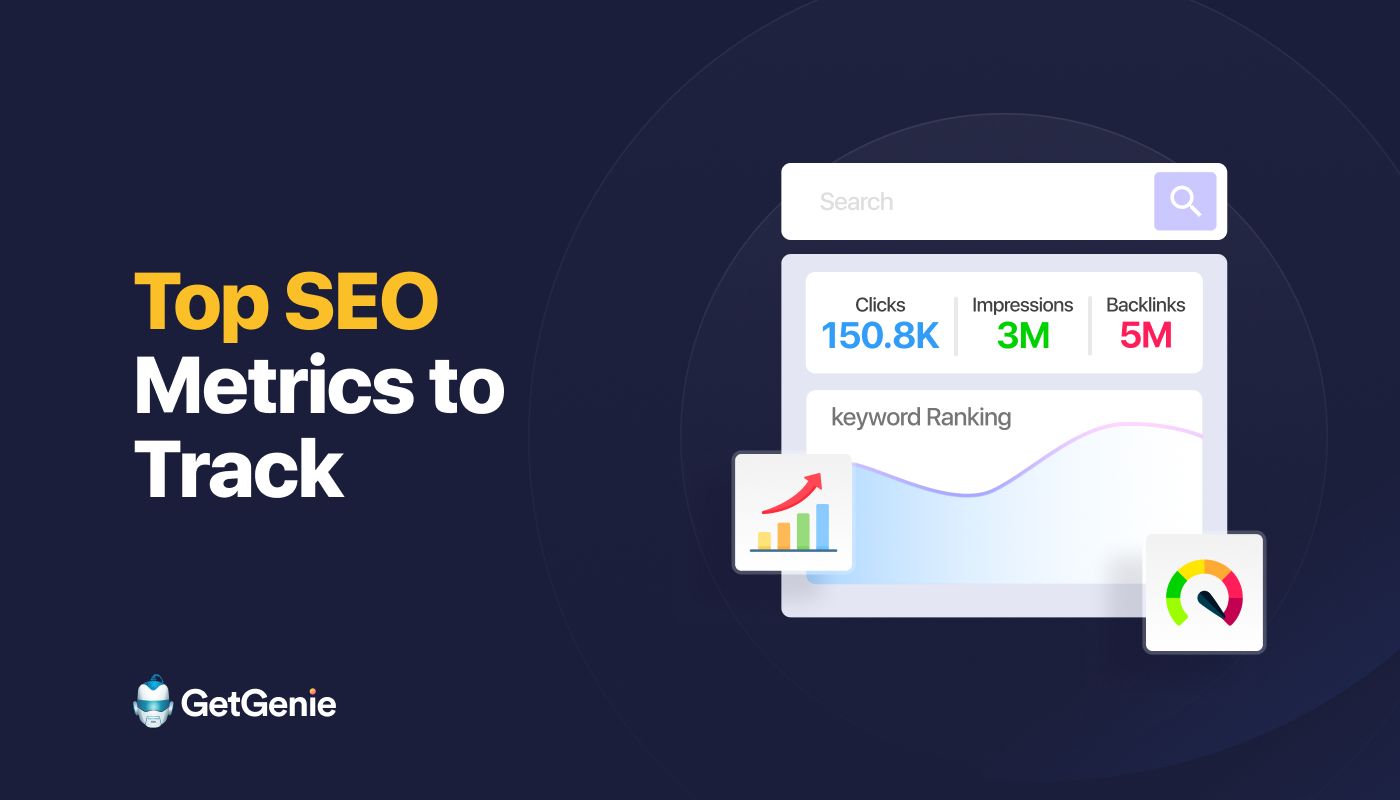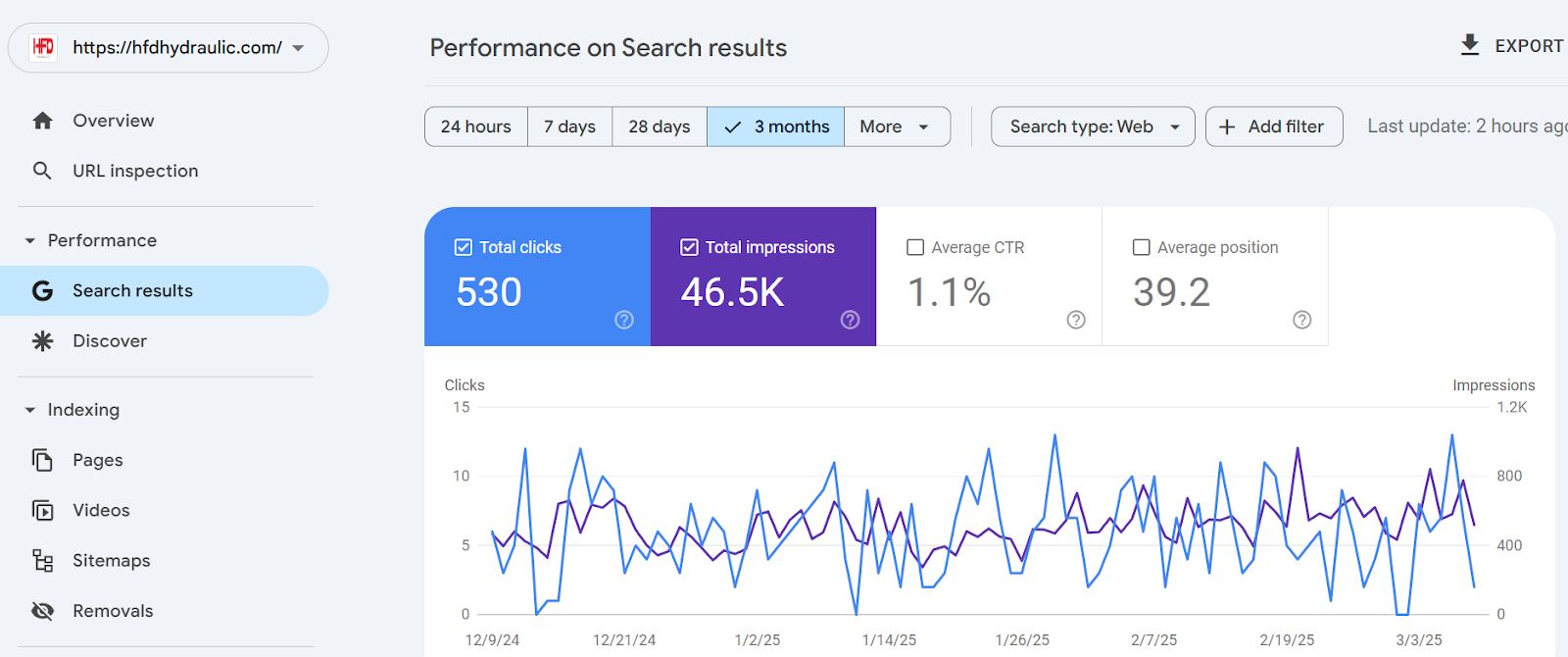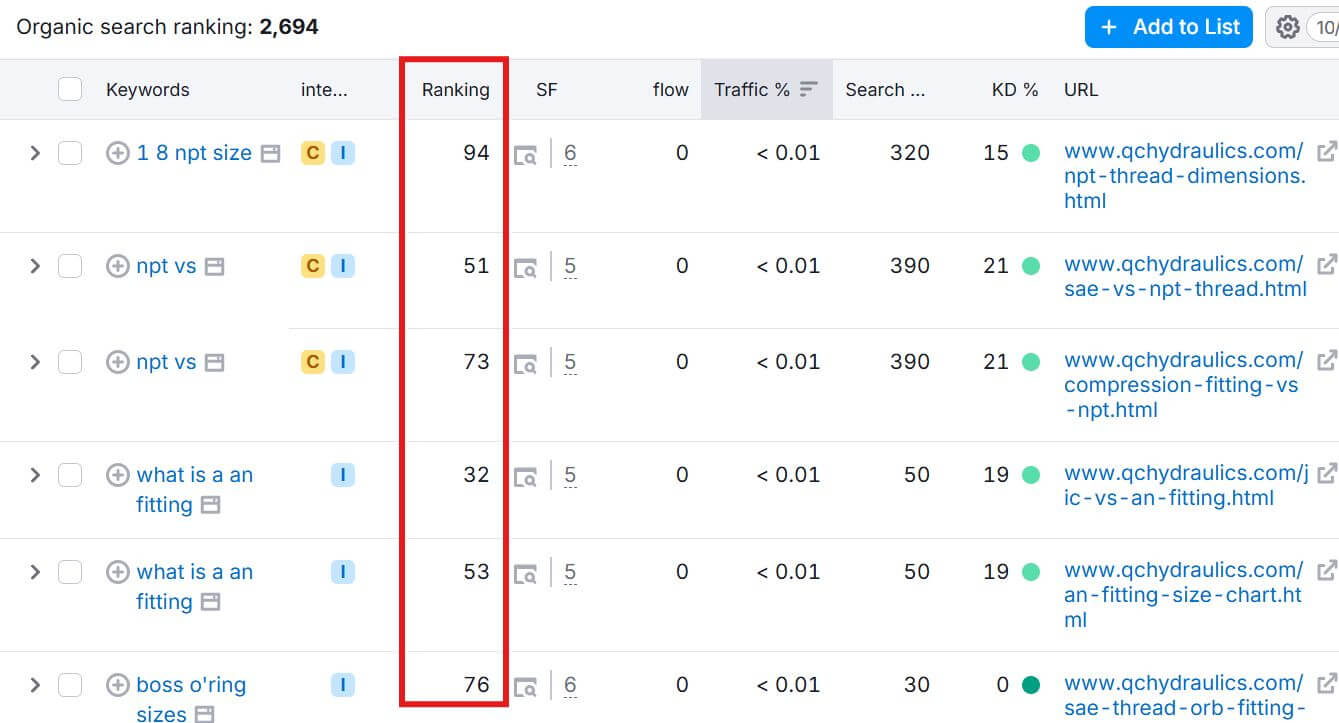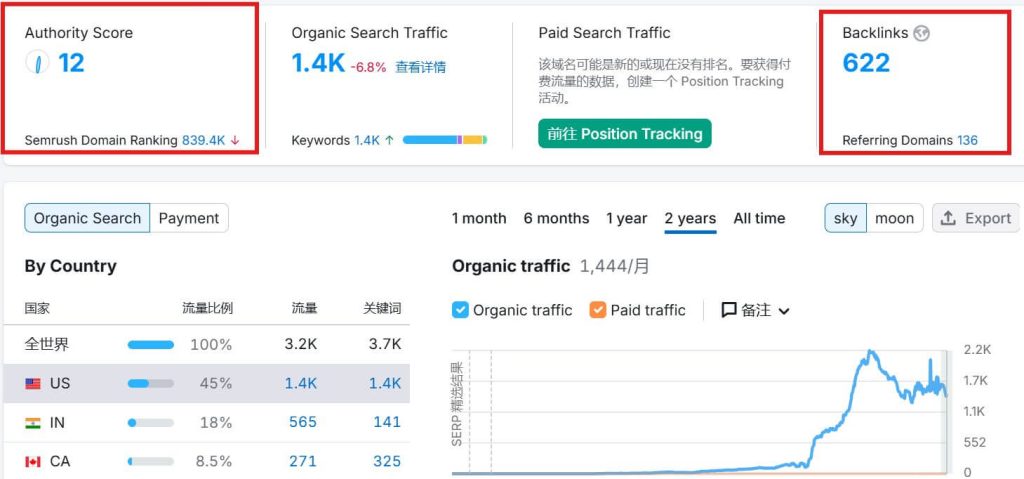Top SEO Metrics To Track To Keep Your Ranking

Think of your website as a ship navigating the vast ocean. Without the right tools and strategy, you’d be lost. Similarly, understanding SEO metrics is essential for maneuvering your site toward success.
These SEO metrics are your guide, helping you track performance and make informed decisions. Instead of guessing what is happening with your website, check these SEO metrics and focus on providing a solution.
In this guide, we’ll explore the top SEO key metrics to track that will keep your website soaring high in the game of ranking in the search results page.
So, let’s get started!
Why Tracking These SEO Metrics Matters
SEO is an ongoing process that requires constant monitoring and adjustments. Tracking key SEO metrics helps you understand these questions:
- What is working?
- What needs improvement?
- How do search engines perceive your website?
Without these insights, you might lose your rankings, traffic, and potential customers to competitors who are paying closer attention to their SEO performance.
Additionally, consistent monitoring of key SEO metrics will help you:
- Create a perfect SEO strategy based on data.
- Monitor your competitors’ performance and identify opportunities to gain a competitive edge.
- Optimize your website for both search engines and users, leading to higher engagement and conversions.
9 SEO Metrics to Track
When assessing the effectiveness of your SEO strategy or performing an SEO audit, there are important metrics you should carefully analyze. Here are the 12 SEO metrics and how to track them.
1. Organic Traffic
The first one on the list is tráfico orgánico. It refers to visitors who land on your website through unpaid search engine results. The organic traffic came from various sources, including search engines, social media, direct visits, and referrals from other websites. Most of this traffic, compromising 90%, came from Google.
Since organic traffic is closely linked to keyword rankings, the most effective way to increase it is by aiming for higher rankings for a broader range of keywords.
Why does organic traffic matter?
A steady increase in organic traffic indicates that your SEO efforts are working. And not just that, it’s also a great indicator that your site is ranking well for relevant keywords.
So, how can you track your organic traffic?
You can easily measure your organic traffic using the Google Search Console. You will determine the volume and identify its trend over time.

You may also apply a query filter to exclude branded traffic for a clearer assessment of your SEO performance.
Moreover, you may also use SEO tools like Semrush, but they will only give you a rough estimate. SO, it is a must that you use Google Search Console for accurate data.
2. Keyword Rankings
Keyword rankings are the leading indicator of the success of your SEO campaigns. The ranking of your keywords shows where your website appears in search engine results pages (SERPs) for specific search queries.
So, why does keyword ranking really matter?
Higher rankings lead to more visibility, clicks, and ultimately conversions. Understanding which keywords you rank for provides insight into your organic search visibility. This allows you to determine whether to optimize those keywords further or shift focus to ranking for new ones.
How to track your keywords ranking:
To get the rank of your keywords, you can select from tools like Google Search Console, Ahrefs, or SEMrush.
For example, using Semrush allows you to track the ranking trend over time for organic search positions or rankings, as shown in the image below.

3. Click-Through Rate (CTR)
The organic click-through rate (CTR) represents the percentage of users who visit your website after seeing your pages in the search results. For example, if 100 people see your listing in the SERPs and 10 click through, then you’ll get a 10% CTR for that page.
Why does it matter to always track your CTR?
A high CTR means that your title tags and meta descripciones are undoubtedly captivating. On the other hand, a low CTR means that your content doesn’t align with the user intent. Additionally, low CTR requires you to optimize your title tags and meta descriptions to drive more traffic to your site.
The best way to improve your CTR is to check it using Google Search Console under the “Actuación” tab. By checking your CTR, you can identify the content that is not generating enough clicks from search results, which you could focus on.
4. Organic Conversion Rate
Organic conversion rate measures how many visitors complete their desired action. This is the number of visitors placing their purchase or signing up for a newsletter and likes.
However, always remember that the number of conversions isn’t the sole indication of your site’s performance. It is very subjective and can vary from time to time. It also doesn’t mean that your site isn’t performing well because you only get fewer orders or checkouts today as compared to yesterday.
For example, if 20 visitors made a purchase yesterday but only 8 did today, does that mean your website is underperforming? Not necessarily. If today’s sales include higher-priced products or the total order value exceeds yesterday’s, relying solely on conversion count may not accurately reflect your site’s success.
So, how can you track it?
Google Analytics can help you set up goals and track conversions from organic traffic. However, you need to set up Enhanced E-Commerce tracking in Google Analytics to capture the necessary data from your eCommerce store, like conversions, their value, and your average order value. The same goes for businesses offering subscription-based software, where you need to monitor leads, trial signups, paid subscriptions, and even the different tiers of new subscriptions over time.
5. Bounce Rate
The bounce rate represents the percentage of visitors who leave your site. Visitors only view your site without clicking any internal links to explore further, leave a comment, or add an item to their cart.
Why is it important to determine your bounce rate?
The bounce rate on your website may lead to 2 varying interpretations, which are:
- It may suggest irrelevant content, poor design, or difficulty navigation.
- Your content fully satisfies the visitor’s query which make them to stick with one content.
For example, if a visitor lands on your blog post organically, reads it from start to finish, and leaves a valuable comment, it still counts as a “bounce.” Yet, in reality, the visitor engaged with your content and found it useful.
6. Average Session Duration
This metric shows how long users stay on your website during a session. The main issue lies in how time-based metrics are calculated.
Google Analytics records timestamps when users navigate between pages or trigger events. It calculates session duration by measuring the time between the first and last recorded timestamps during a session. Similarly, time on page is determined by the difference between loading one page and clicking on another.
As a result, any bounced session is recorded with both a 0-second time on page and session duration because Google Analytics only captures the initial timestamp when the visitor first loads the website.
Now, why is it important to track this metric?
Here’s why it’s important:
- A longer stay indicates that your content is valuable and engaging.
- It enables you to identify which pages users are interested in and which pages need improvement.
- A longer session is a good indicator that visitors are more likely to take desired action, such as making a purchase or signing up.
- A short session might indicate poor navigation, unengaging content, and slow loading time.
By tracking this metric, you gain insights into visitor behavior and can make data-driven decisions to enhance your website’s performance.
7. Backlink Profile and Referring Domains
Backlinks are one of the most important ranking signals for Google. A recent study analyzing over 11 million search results found a strong correlation between rankings and the number of referring domains.
Backlinks refer to all external links pointing to your site, while referring domains represent the number of unique websites linking to you.
However, quality matters more than quantity. 5 backlinks from high-authority domains are far more valuable than 100 links from low-quality sources. While all backlinks can contribute to SEO, links from new referring domains generally have a stronger impact than additional links from sites that have already linked to you.
Now, if you are asking which tool can best track the backlinks of your website and determine their domain authority, well, there are lots of tools. Semrush is one. It allows you to see which websites are linking to you, the specific pages they’re linking to, and the domain rating of those referring sites.

8. Page Speed
Your site speed is a crucial SEO ranking factor for both desktop and mobile. It directly impacts your rankings and user experience. Average page load time measures how long it takes to display a page’s content.
You can find this metric in Google Analytics under “Behavior” > “Site Speed.” It allows you to view the overall average load time for your site or check the load times for specific pages. You can also use Google PageSpeed Insights or GTmetrix to analyze your page speed.
Now, what will happen if you have a higher loading speed?
Here’s what can happen:
- Longer loading speed reduces engagement and conversion because your visitors would likely leave.
- Slow-loading pages may rank lower.
- A slow site will frustrate your visitors, leading to unfinished purchases and fewer return visits.
- Search engines may take longer to index your content if your site loads slowly.
9. Index and Crawl Errors
For your pages to appear in search results and drive organic traffic, they must first be indexed. Search engine bots like Googlebot scan the internet to find new uploaded pages. These bots follow links from other websites, sitemaps, or previously known pages to discover content.
Once a page is crawled, search engines analyze its content, structure, and metadata (such as title tags and meta descriptions). If the page is valuable and accessible, it gets added to the search engine’s index, making it eligible to appear in search results.
Ideally, the number of indexed pages should steadily increase as you publish new content. Any sudden fluctuations may indicate a technical SEO issue. Moreover, a fast crawl rate allows Google’s crawlers to index your site quickly and efficiently. It could increase your chances of ranking higher in search results.
So, how can you check the number of indexed pages?
By accessing your Google Search Console, you will see the number of pages being indexed and the pages not indexed.
You will also see the reasons why your pages are not indexed and the number of pages for each reason. This indicator allows you to work on those pages to ensure they will be indexed.
Additionally, you can check how many pages Googlebot has crawled daily over the last 90 days by navigating to Settings > Crawl Stats.
If you have hundreds of pages, but only a fraction are being crawled, it could indicate a problem with your crawl budget. Googlebot may not crawl your entire site if doing so requires excessive system resources.
While a higher crawl rate doesn’t directly guarantee better rankings, it’s an important technical SEO metric to monitor and optimize.
Should You Want to Be Lost in the Ranking?
If you ignore SEO metrics, your website will likely drop in rankings, reducing traffic and visibility. So, the answer is “No”. Instead of getting lost in search results, take control of your SEO strategy and watch your website thrive.
Take note of these SEO metrics and make sure you are regularly monitoring them. Always optimize your website based on these key metrics to ensure you stay ahead of the competition
